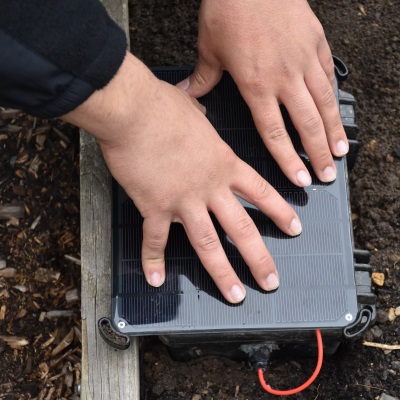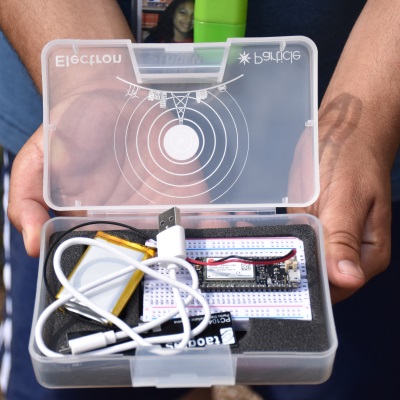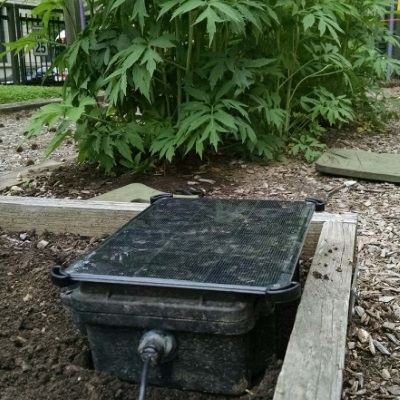Philadelphia Water teamed up with Science Leadership Academy students and Franklin Institute staff to develop and install a web-connected, solar-powered soil moisture sensor in the Franklin Institute’s ozone garden. The data below will let gardeners know when the plants need watering.
A VH400 soil moisture sensor is inserted approximately 4 inches deep into the garden’s soil and takes a measurement every 2 hours. The sensor returns a voltage that corresponds to how wet or dry the soil is—this is based on the dielectric constant of the soil. (The dielectric constant of water is about 80; the dielectric constant of air is about 1. Read more about soil moisture, how it is measured, and what types of tools are used can be found here.)
As we collect data and observe the conditions of the soil, we will be able to relate our voltage readings to the soil’s volumetric water content (VWC). This is the ratio of water volume to soil volume. The VWC values will help to determine when to water the garden. The sensor device—we call it the Soil Cell, because it uses the cellular network to communicate—can even text or email us to let us know the soil is too dry.
In October, we added a thermistor—a thermally sensitive resistor—to the Soil Cell device in order to measure air temperature. You can learn more about the $4 thermistor we used here.
We can also use weather forecasts in order to be efficient about watering.
 Attaching the Solar Panel (Photo by Miriam Sachs) Attaching the Solar Panel (Photo by Miriam Sachs) |
 The Breadboard (Photo by Miriam Sachs) The Breadboard (Photo by Miriam Sachs) |
 The Electron Kit (Photo by Miriam Sachs) The Electron Kit (Photo by Miriam Sachs) |
 In the Wild In the Wild |
Want to build your own low-cost, high-tech soil sensor? Check out the Soil Cell 2G or Soil Cell 3G DIY pages.

